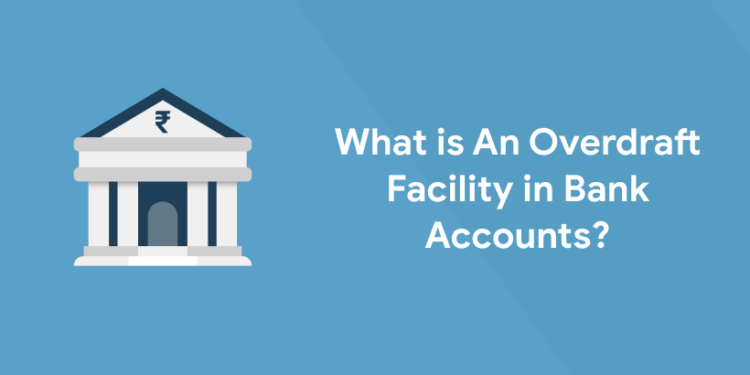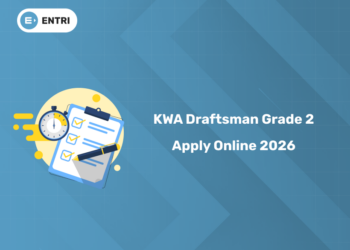Table of Contents
Overdraft results in a debt since the bank effectively lends the account holder the money needed to conduct the transaction; this money must be repaid together with any associated costs. Even while the account user may regard it as beneficial, if overdrafts are not managed swiftly and correctly, expenses could skyrocket.
The Royal Bank of Scotland established the first overdraft facility in 1728. William Hogg, a merchant who was having trouble keeping his records in order, was able to reach a deal with the newly founded bank that allowed him to take money out of his empty account to settle his debts before he received his payments. He became the first person ever to receive cash credit from a bank. Within a few decades, banks throughout the United Kingdom adopted this idea as the benefits of this method for both clients and banks became clear. With the advent of industrialization, emerging companies required a quick source of financing to kickstart their operations without having to take out loans against securities they might not necessarily own.
Click here to learn overdraft meaning
What is an Overdraft Facility in Bank Accounts?
An overdraft happens when a bank authorises a transaction even if there isn’t enough money in the account to cover it. In essence, it’s a financial institution’s available credit that is extended when an account balance reaches zero. The overdraft feature enables the account holder to make withdrawals even when there aren’t any funds in the account or not enough to cover the withdrawal’s cost. In essence, an overdraft is when a bank permits a customer to borrow a certain amount of money. In addition to fees for each overdraft, there is interest charged on the loan.
When a customer uses an overdraft account, a bank pays for payments that would otherwise be declined or, in the case of physical checks, bounce and be returned unpaid. The borrower must pay interest on the unpaid balance of an overdraft loan, just like with any other loan. The overdraft is a better short-term alternative in an emergency because the interest rate on the loan is frequently cheaper than the interest on credit cards. The amount available to pay your checks is frequently reduced by additional fees for employing overdraft protection, such as insufficient funds fees per check or withdrawal.
Your bank has the option of paying off your overdraft with its funds. Connecting the overdraft to a credit card is an additional choice. In most cases, your credit score won’t be affected if the bank uses its funds to pay down your overdraft. It is possible to expand your debt to the point where it could negatively impact your credit score when a credit card is used for overdraft protection. However, your bank accounts’ overdrafts won’t indicate an issue with this. Your bank may take over your account to a collection agency if you don’t pay back your overdrafts within a set period. Your credit score may be impacted by this collection activity, which will also be reported to Equifax, Experian, and TransUnion, the three major credit reporting agencies. Whether or not there is a problem with an overdraft on a checking account depends on how the account is reported to the agencies.
Click here to get banking awareness notes on overdrafts
Types of Bank Account Overdrafts
1: What does the acronym "ATM" stand for in banking?
Authorized overdrafts and unauthorised overdrafts are the two forms of overdrafts in bank accounts.
- Authorized Bank Overdraft: An authorised overdraft is one where the agreement between the account holder and their bank is made in advance. Both parties accept borrowing limits that apply to all customary payment methods. Of course, there is a service charge associated with the arrangement, which varies from bank to bank. Typically, the cost is assessed daily, weekly, or monthly along with interest, which can range from 15 to 20 per cent APR. An overdraft agreement can be quite expensive, especially if the borrowed amount is very tiny, given the occasionally extremely high costs. Account-holders should take great care to prevent overdrafts of any kind, including permitted ones.
- Unauthorized Bank Overdraft: The word denotes that the overdraft was not approved in advance and that the account holder has spent more money than was left in his account. Even if there was a prior agreement, unauthorised overdrafts may still occur if the account holder went over the agreed-upon overdraft limit. Unauthorized bank account overdrafts are charged additional costs, making them more expensive.
Register to learn topics under banking awareness
Another categorisation of types of overdraft is as given below.
- Overdraft against Salary: This facility is available to businesses that open salary accounts for their employees. The minimum requirement for an Overdraft facility in a salary account is that the company credits a regular monthly salary and that the company is on the bank’s approval list. Banks provide overdrafts of up to three times the customer’s current salary. The facility is available with minimal documentation and an easy-repay feature. Customers are only required to pay interest on the amount used, with the option to repay the amount at any time without incurring pre-closure fees. Depending on the bank, the minimum salary ranges from Rs. 15,000 to Rs. 25,000. This type of Overdraft does not require any collateral or security. Some banks even provide overdraft facilities of up to Rs. 4 lakhs.
- Overdraft on Savings Account: Despite being a relatively new concept in the country, overdrafts on savings accounts have grown in popularity due to government support. All Pradhan Mantri Jan Dhan Yojna savings accounts are eligible for an overdraft of Rs. 5,000 or four times the monthly accent balance (whichever is lower). This facility is only available to one member of a family after the accounts have been satisfactorily operated for six months. The facility is provided to the family’s earning member, preferably a woman. An Aadhar card must be linked to the account. For compliance with the RBI directive, the account holder must also have another savings account. Minors and KCC (Kisan Credit Card) holders are not eligible. The facility also comes with a renewal fee. The interest rate, however, cannot be more than 2% above the base rate. There is no processing fee for this service. Citibank Suvidha Savings Account is another good example of an Overdraft on a Savings Account. This is a type of instant cash credit that allows you to get up to 5 times your net monthly salary in cash right away. The interest rate and minimum EMI amount are set by the bank. However, the customer has the option to increase the EMI amount at any time. There is no prepayment fee with this scheme.
- Overdraft against Time Deposits (FD): Overdraft facilities are also available for time deposits, such as fixed deposits. However, not every bank offers this service because it is subject to the bank’s policy.
- Overdraft Against Equity: A borrower can obtain this facility by using equity as collateral; however, the acceptable limit is substantially less than the market value of those stocks.
- Overdraft Against Home: House owners can borrow up to 40-50 per cent of the value of their home.
- Overdraft Against Insurance Policy: The service can also be obtained based on the surrender value of an insurance policy.
Register to attempt a bank mock test
Enroll in Kerala's Top-rated Bank Coaching Program!
Are you ready to take your banking career aspirations to new heights? Join Entri App's Bank Exam Coaching program to kickstart your preparations!
Join Now!Overdraft Protection
Some banks, although not all, will automatically settle overdrafts as a service to the customer (while charging fees, of course.) The consumer is given an additional tool by overdraft protection to avoid embarrassing lapses that negatively portray your capacity to pay. Typically, it operates by connecting your checking account to a line of credit, a savings account, or another checking account. If there is a shortage, this source is tapped for the money, preventing the return of a check or the denial of a transaction or transfer. It also prevents a non-sufficient funds (NSF) fee from being assessed. Each account and bank have a different overdraft protection policy. The customer frequently has to ask for it precisely. There are many benefits and drawbacks to using overdraft protection, but it’s important to remember that banks aren’t offering the service out of a sense of altruism. Typically, they want payment for it. Customers should be careful to only use overdraft protection in dire circumstances. The banking institution has the right to delete the overdraft protection from the account if it is utilised excessively.
How Does Overdraft Protection Work?
Under overdraft protection, if a customer’s checking account experiences a negative balance, they can receive a pre-approved loan from the bank and will be charged a fee for doing so. Overdraft protection is frequently utilised to avoid the embarrassment that could result from a check bouncing. Additionally, it could avoid a non-sufficient fund fee, however, this tax is often around the same regardless of its form.
Sign in to attend video classes on banking awareness
What Is an Overdraft Fee?
When an account reaches zero, a bank will lend a customer money through an overdraft to cover bills and other expenditures. In the event of an unforeseen charge or insufficient account balance, the bank offers the client a loan for a fee. The usual fees for these accounts include a one-time funding fee and interest on the unpaid amount.
Click to learn important banking terms
Enroll in Kerala's Top-rated Bank Coaching Program!
Are you ready to take your banking career aspirations to new heights? Join Entri App's Bank Exam Coaching program to kickstart your preparations!
Join Now!Advantages of Bank Account Overdrafts
Overdrafts on bank accounts are not always a bad thing. They can provide benefits such as the following:
- Perfect for a cash mismatch. Overdrafts are extremely useful when payment dates arrive before all receivables. The overdraft can then be used to pay the outstanding check balances. As receivables are paid, the account funds will be restored.
- Bouncing checks is bad for one’s credit. Bounced checks are avoided with a bank account overdraft.
- Allows for on-time payments. Because the overdraft covers the deficit, no payments are late due to insufficient funds. This safeguards the account holder’s credit score and keeps them from having to pay late fees to suppliers.
- In comparison to traditional long-term loans, bank account overdrafts are relatively simple to manage and require little paperwork.
- It is convenient. Overdrafts can be taken out whenever they are needed, as long as the bank does not withdraw the agreement.
Join the best classes for the bank test of 2022
Disadvantages of Bank Overdraft
The following are some of the drawbacks of a bank overdraft:
- A higher interest rate is charged for the loan facility.
- It is only available to bank account holders.
- The offered limit is determined by the individual’s or business’s financial situation.
- The interest rate is not fixed and fluctuates regularly.
- Is not a good long-term financing option.
Click here to get practice questions for banking awareness
How to Prevent Bank Account Overdrafts?
Overdrafts in bank accounts can be avoided, especially if the account holder is aware that he or she may spend more than the amount of money in the account. Here are some tips for avoiding overdrafts and the associated fees:
- Regularly check the account balance. This appears to be a simple concept, but many people overlook it. The account holder determines how much he or she can spend by constantly checking. This is simple to accomplish with today’s technology, such as a bank’s mobile app.
- Contact the bank. If the account holder believes that the existing authorised overdraft limit is insufficient, he or she should contact the bank and request a temporary increase in the overdraft limit. The bank will usually grant such a request if they have always managed their account responsibly.
- Read bank correspondence: Many people ignore bank letters because they believe they are just routine communication. They do, however, give useful information about your bank account, such as overdraft notices.
- Move accounts to another bank: Some banks allow overdrafts and do not charge fees or interest. They are simply grateful to have clients open and maintain accounts with them. If you are prone to overdrafts, it may be beneficial to search out such a bank for your accounts.
All the necessary information regarding the overdraft account has been discussed in the article. Download the Entri app to learn more about overdrafts and their features.










